One of the decisions I have to make when groups visit Glen Villa is which way to go. Shall I to lead the group around the garden this way or that?
In some gardens the choice is made for you. There is a set route that the garden maker or garden owner wants you to take. Or that the government authority in charge has dictated.
This is the case at Villa Lante, the Renaissance garden built for Cardinal Gamberaia and now owned by the government of Italy. The Cardinal’s garden used water to show how nature, untamed and chaotic, is ‘civilized’ by art and the power of man. To follow the story, visitors entered the garden at the top of a hill, where water poured out over rough tufa walls.
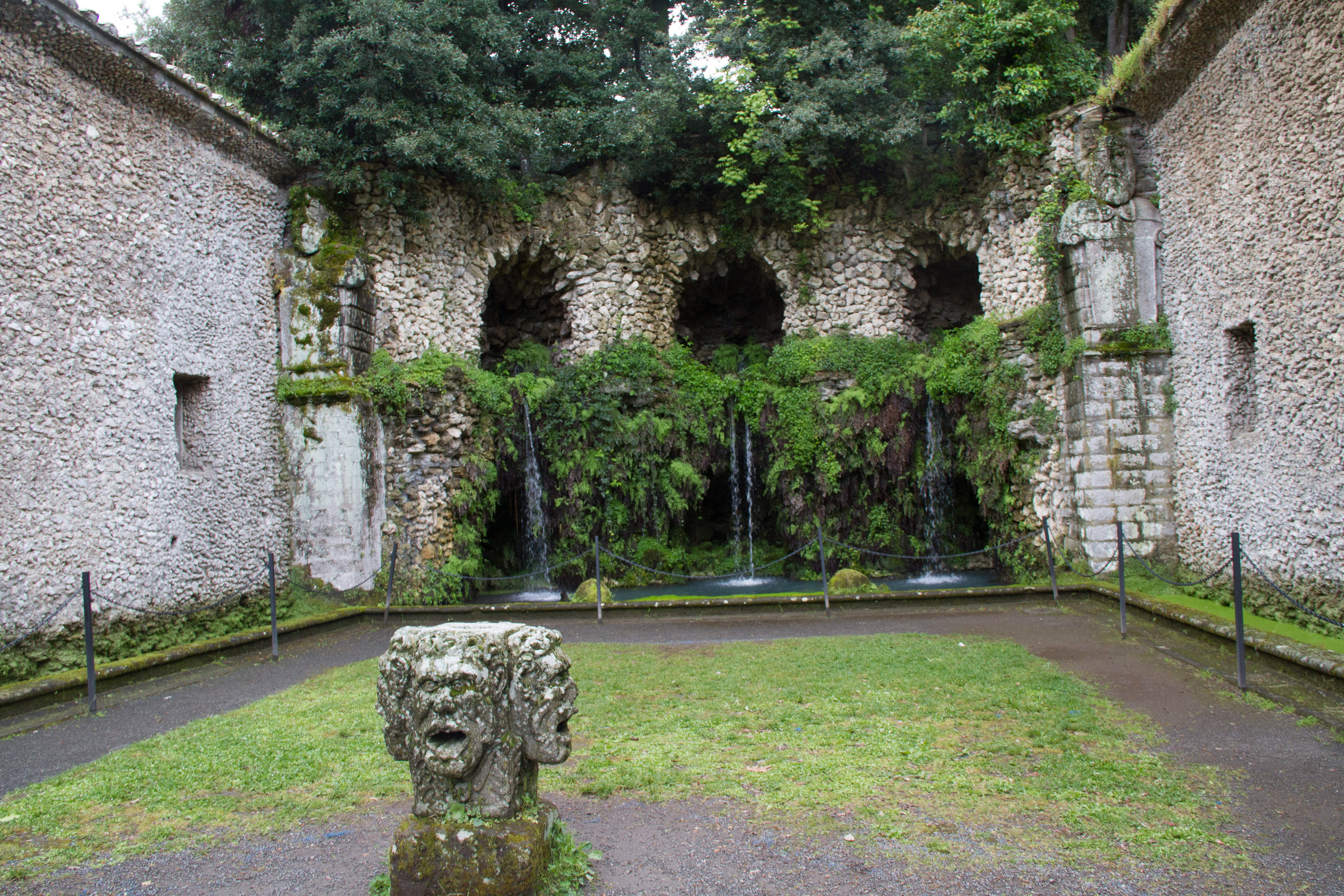
This area is called the Grotto of the Deluge. It is meant to mark the division between primitive life and the beginning of civilization.
As they moved down the hill, they witnessed a gradual transformation, with art increasingly dominating nature.
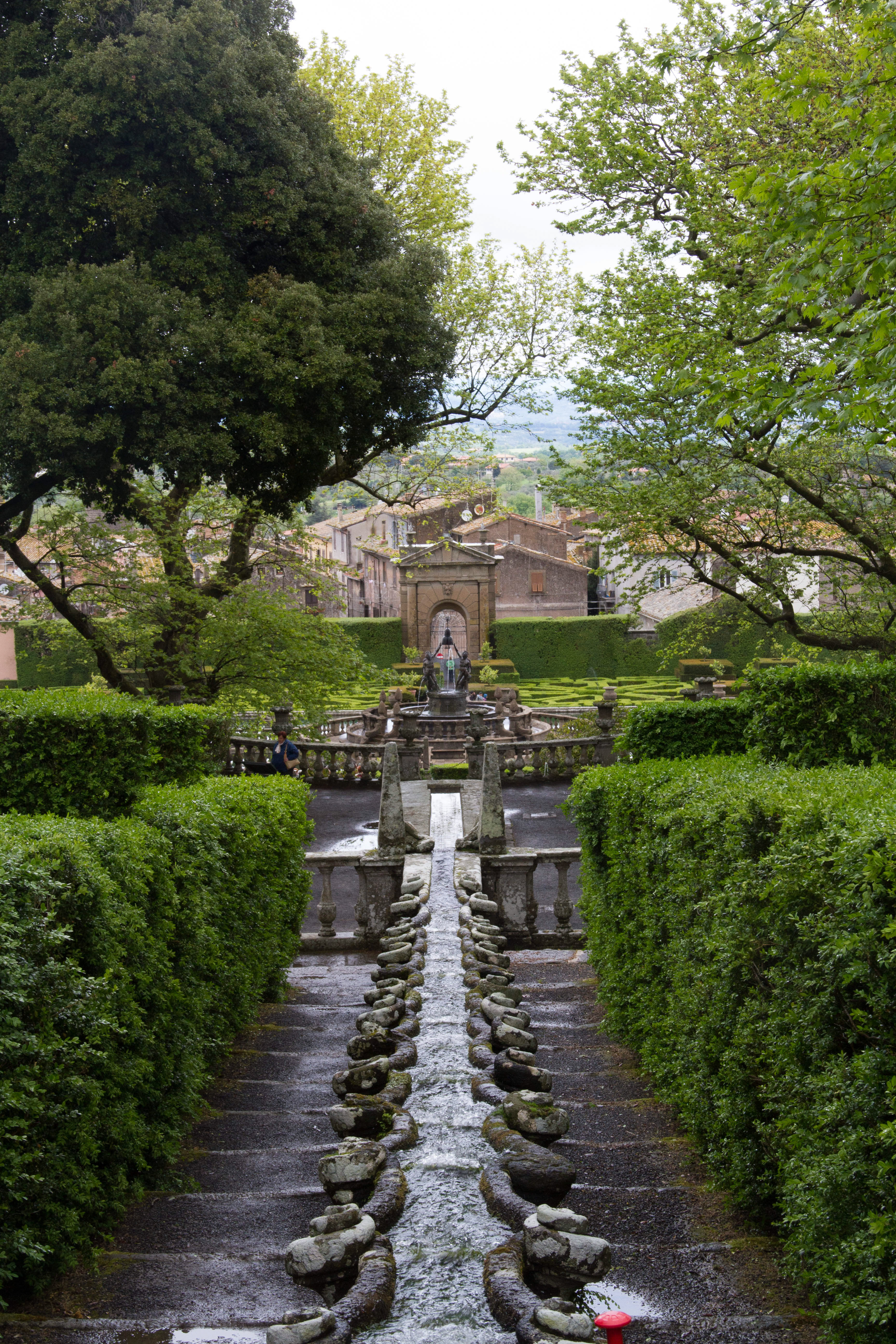
Hand-carved, each scroll on the rill is slightly different, and that difference modifies the sound of the water as it descends.
The transformation reached its climax at the lowest level, where water rested, calmly contained within a large square basin surrounded by a formal broderie design.
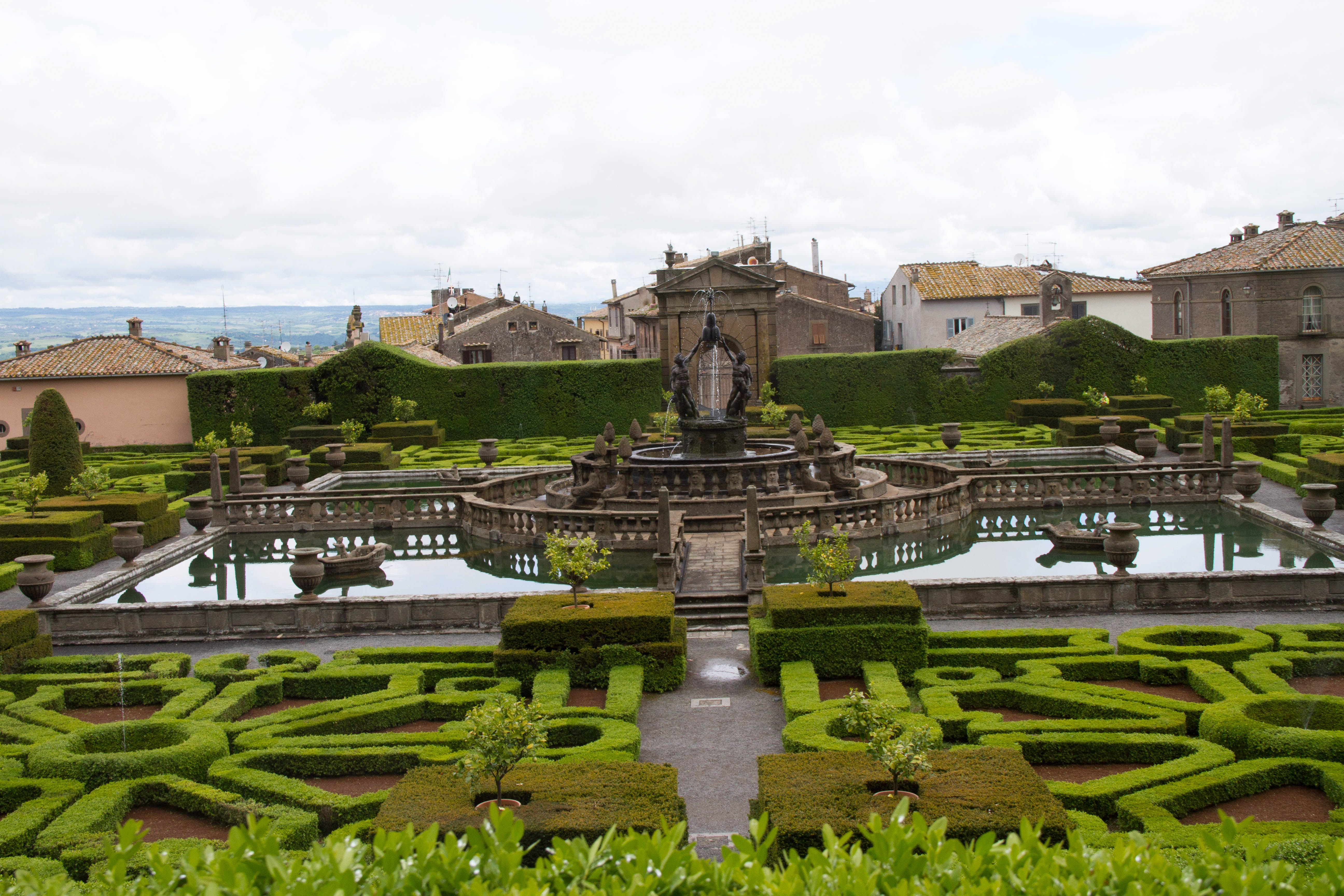
The town of Viterbo lies just outside the garden walls.
Today the direction is reversed. Visitors enter at the bottom of the garden, distorting the Cardinal’s metaphor by presenting it backwards.
The same bottom to top problem exists at Villa d’Este in Tivoli. In the 1500s, visitors entering at the bottom of the garden spied the palace high above them. The sight was meant to overwhelm, and it did.
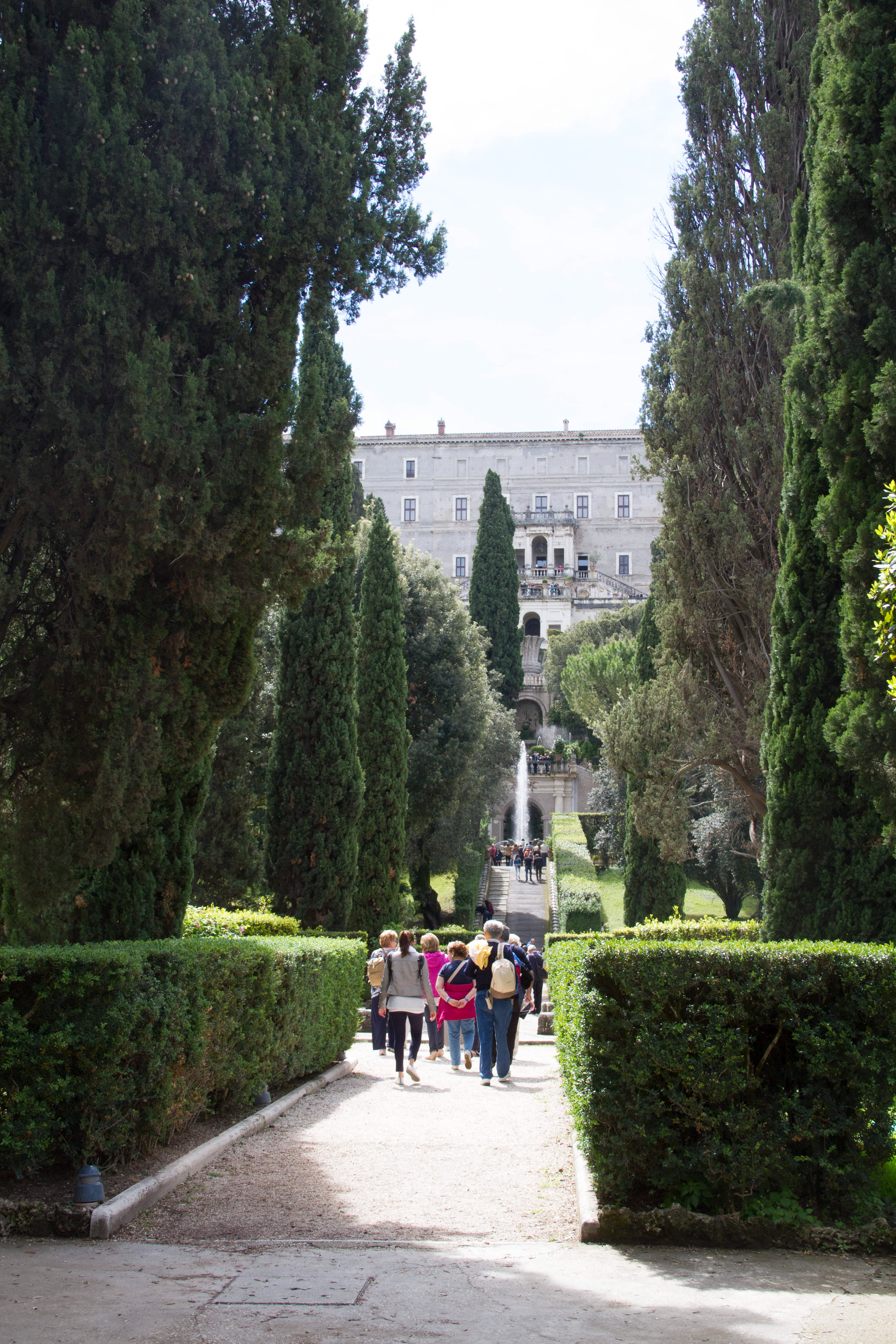
No path leads straight to the top of the hill. A visitor might follow one path on a first visit, another on a second.
Today’s visitors enter at the top, looking down from the seat of power instead of up to it.
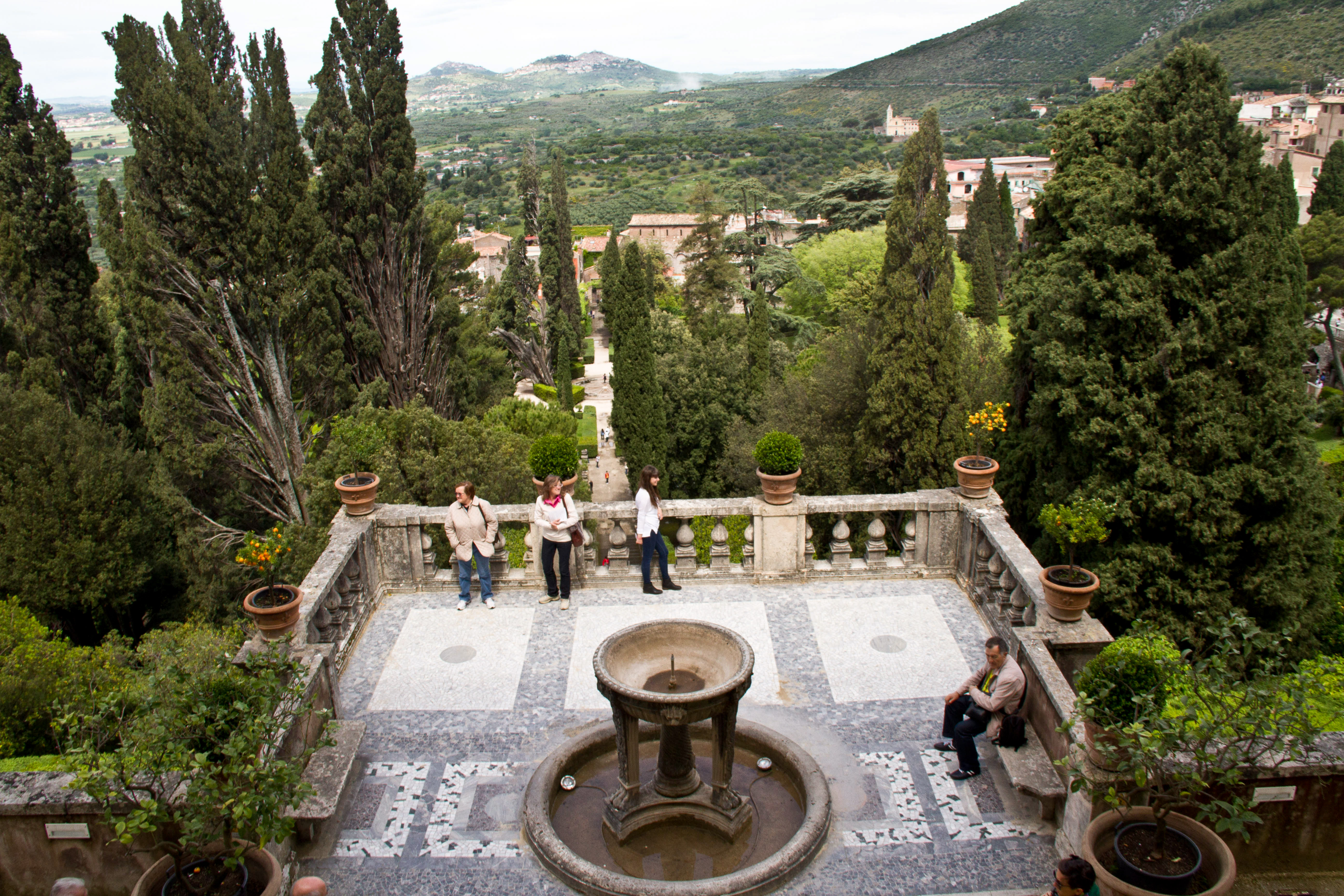
This terrace is one of many that visitors encounter as they make their way through the garden.
Few gardens today are designed to convey messages through topography. (I can’t think of any. Can you?) But the way visitors move through a garden still matters, because the route we take affects how we experience the space.
A few years ago I visited the Morikami Japanese Garden in southern Florida. My companion had been to the garden once before and, because she hadn’t found the experience particularly meaningful, wasn’t eager to return. The second visit changed her mind — and all because we went round the garden the ‘right’ way.
A pond lies at the centre of the garden, and visitors are meant to walk around it counterclockwise. This is also the case at Stourhead, an18th century English landscape garden in Wiltshire. Circling the lake the ‘right’ way presents views to their best advantage, the way the garden’s creator, Henry Hoare, intended.
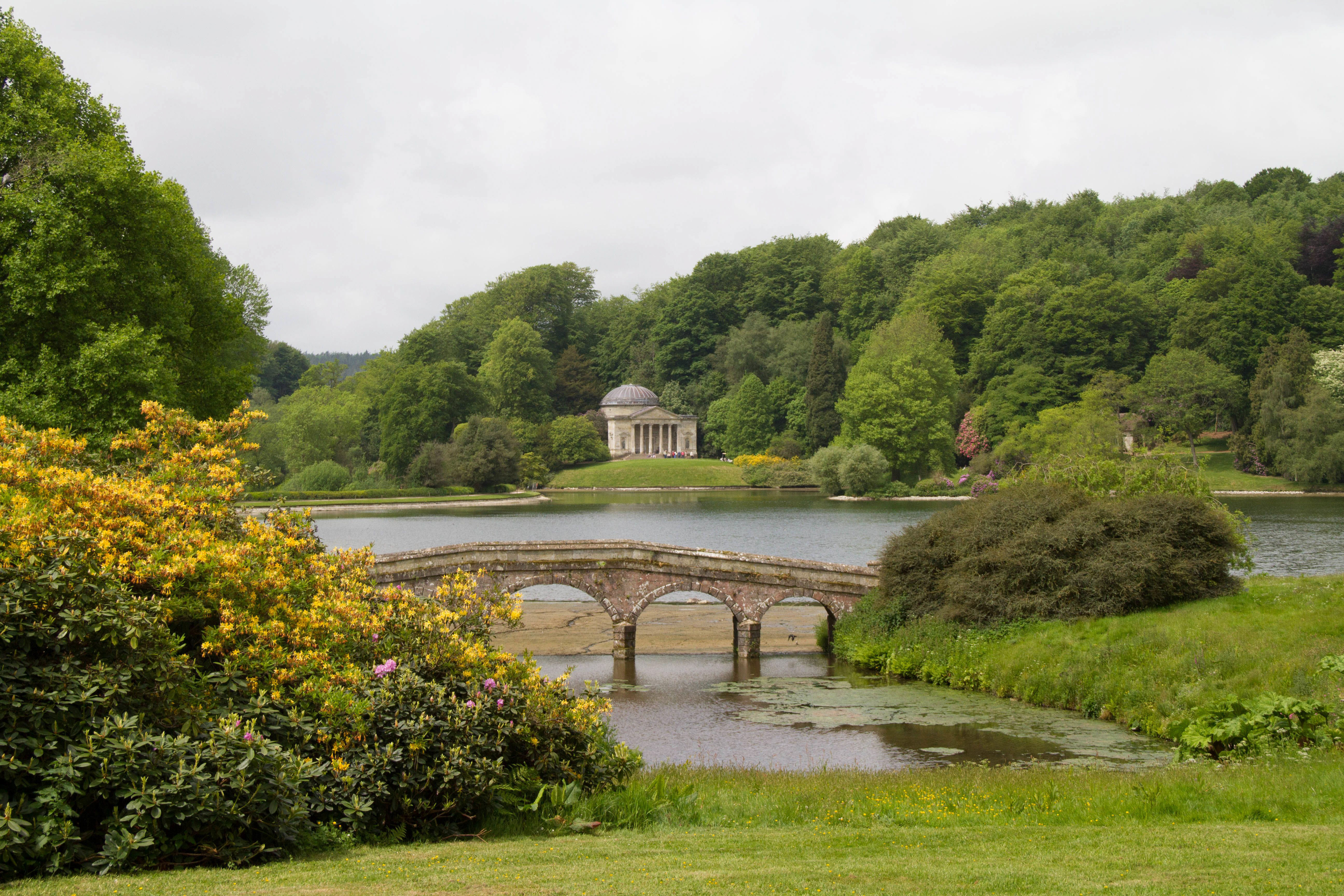
Hoare created the lake by damming a stream. His classical buildings provide focal points as well as telling a story.
Views aren’t the only reason why a visitor may be encouraged, or forced, to take one path rather than another. Consider Mt. Cuba, a garden located near Wilmington, Delaware, where native plants are the raison d’être. Showing wildflowers to their best advantage does not depend on the path you follow. But because Mt Cuba is open to the public, visitors’ steps are directed along clearly defined routes.
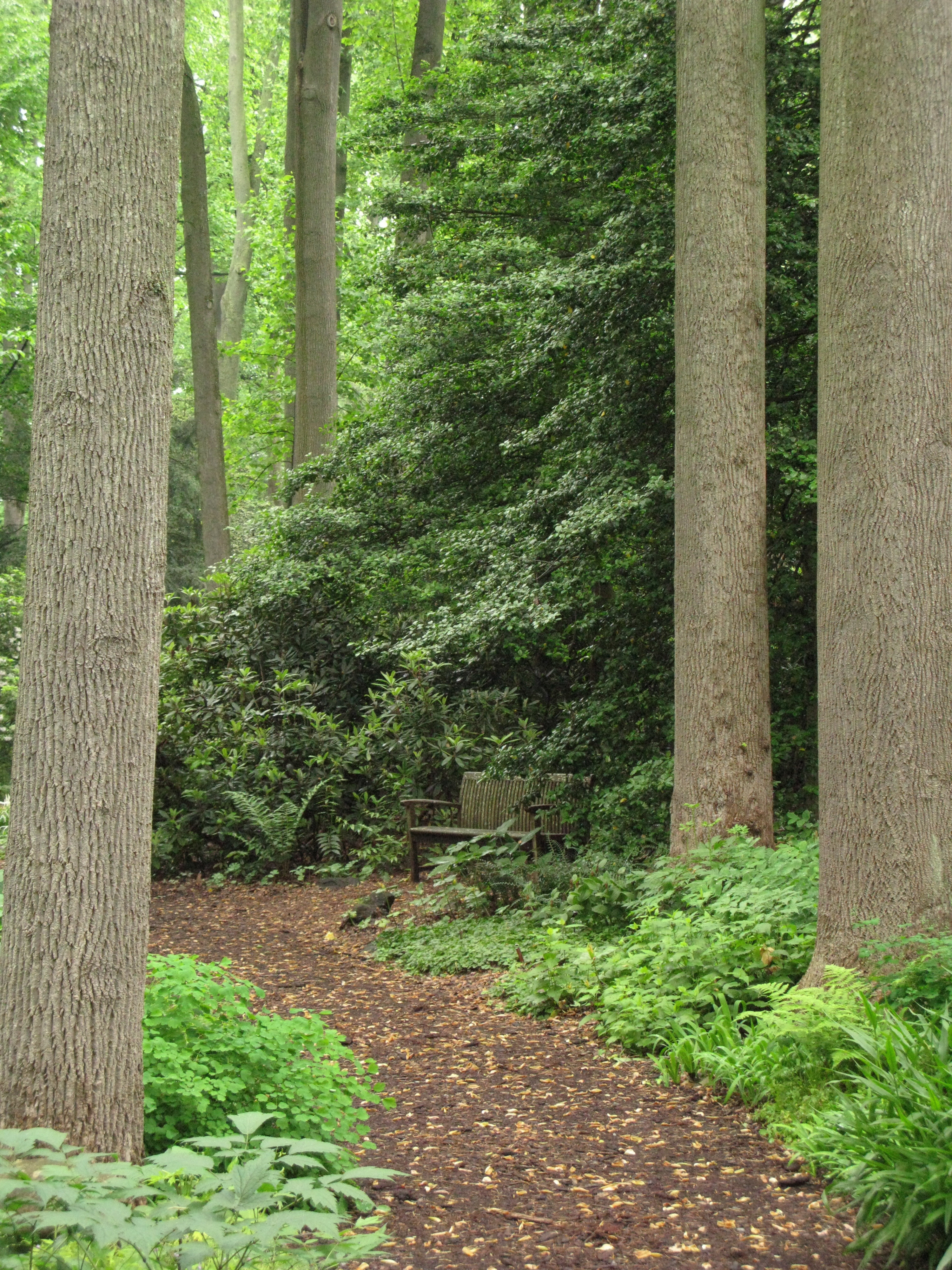
Controlling where visitors walk protects sensitive plants and sensitive areas.
The lushly romantic garden of Ninfa was designed for wandering, and it’s easy to imagine the original owners lingering here or there to smell a rose or listen to a murmuring stream. The experience is different for visitors today. Groups are frogmarched through the garden on a predetermined route and at a predetermined pace that dampens even a whisper of romance.
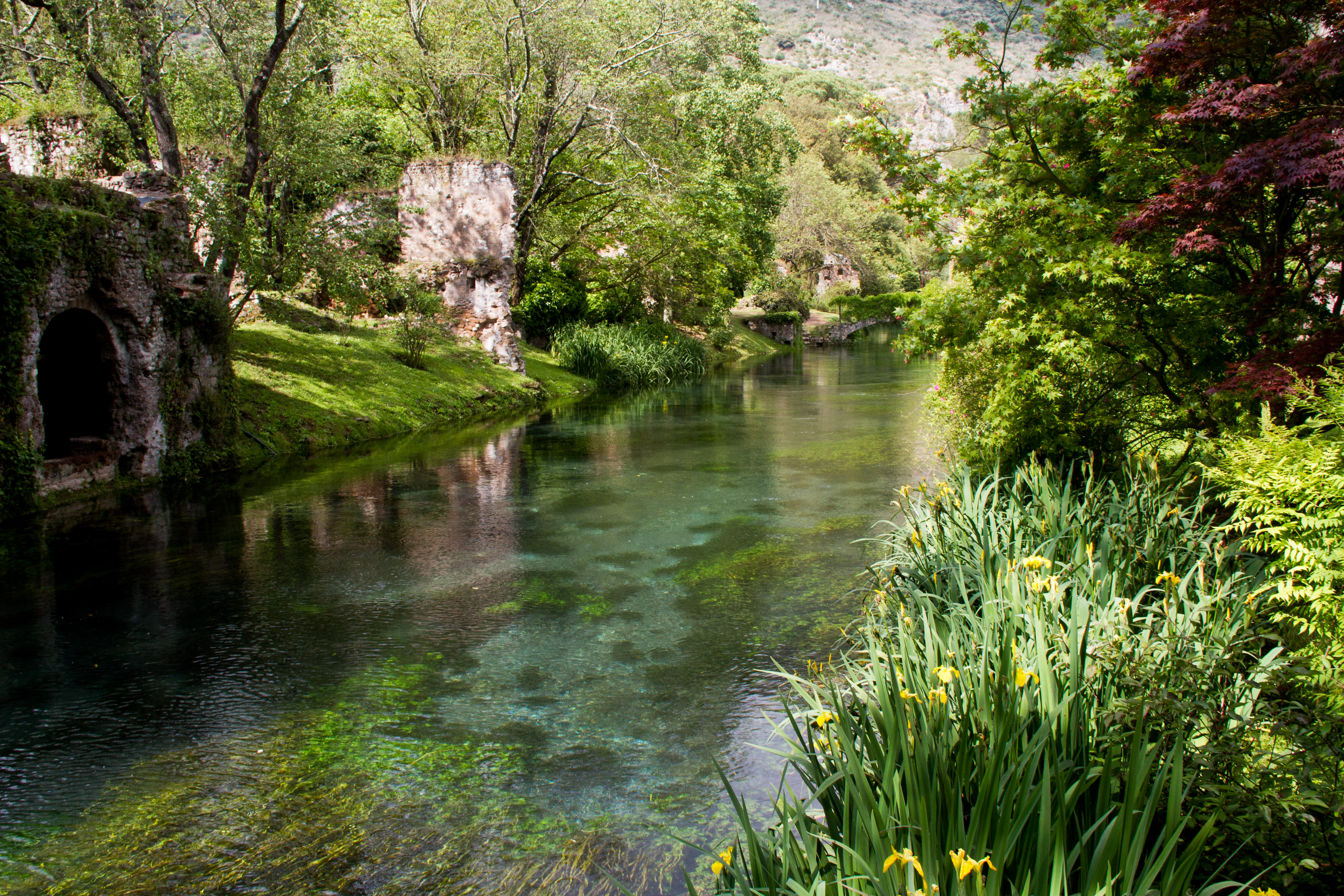
Ninfa has been described as the most romantic garden in the world.
The experience at Prospect Cottage, Derek Jarman’s garden on the shingle beach in Kent, is different again. A private garden, it nonetheless feels public — it fronts onto a public road and no fences separate the garden from its surroundings. Visitors can wander as the please, circling the house one way or the other, exploring each vignette and finding whatever meaning they choose.
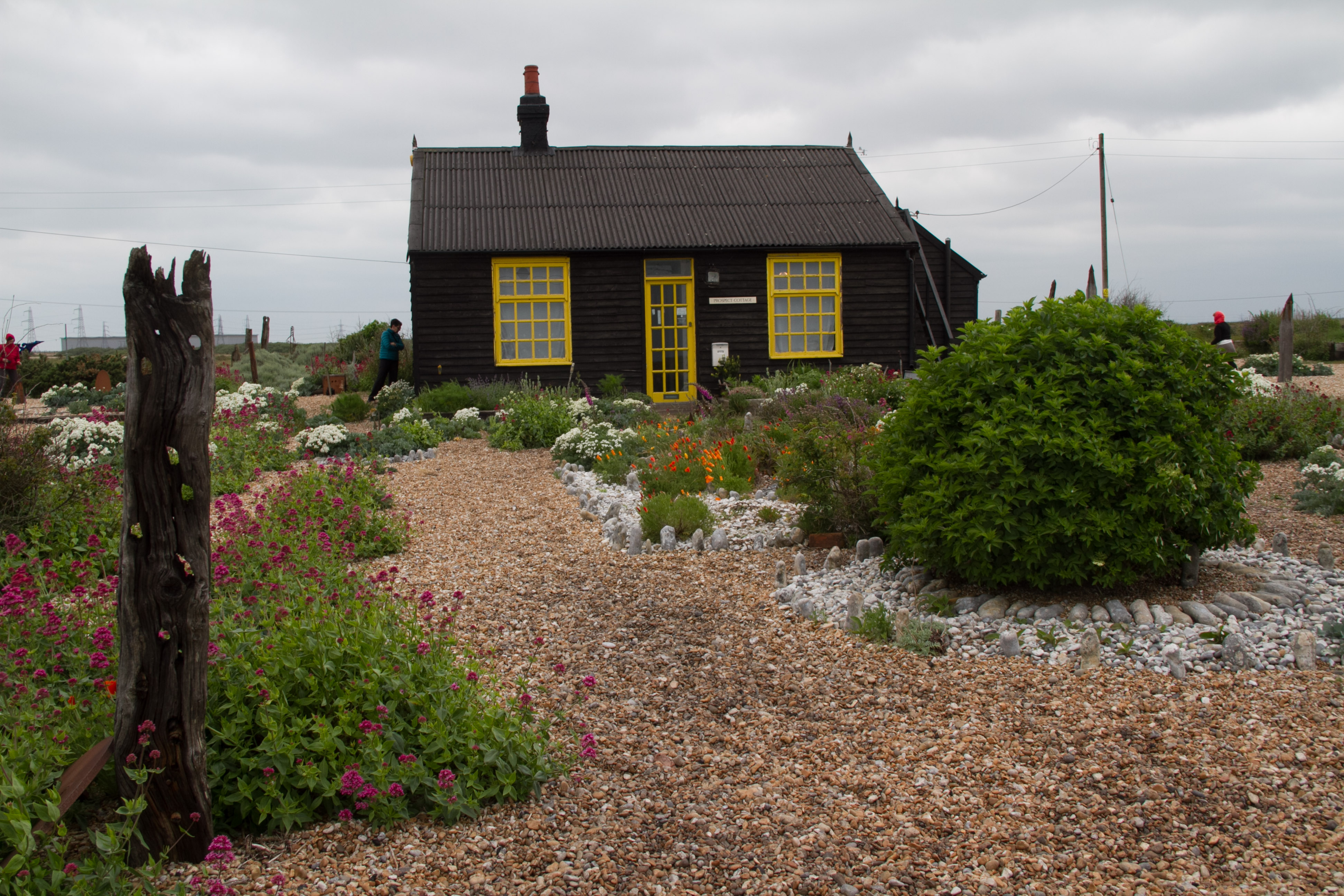
The setting is bleak, windy and inspirational.
Where you enter the garden can make a difference to the experience. In the Walled Garden at Scampston Hall, visitors are encouraged to walk around three sides of the garden before entering the first of nine garden rooms, the Piet Oudolf designed Drifts of Grass.
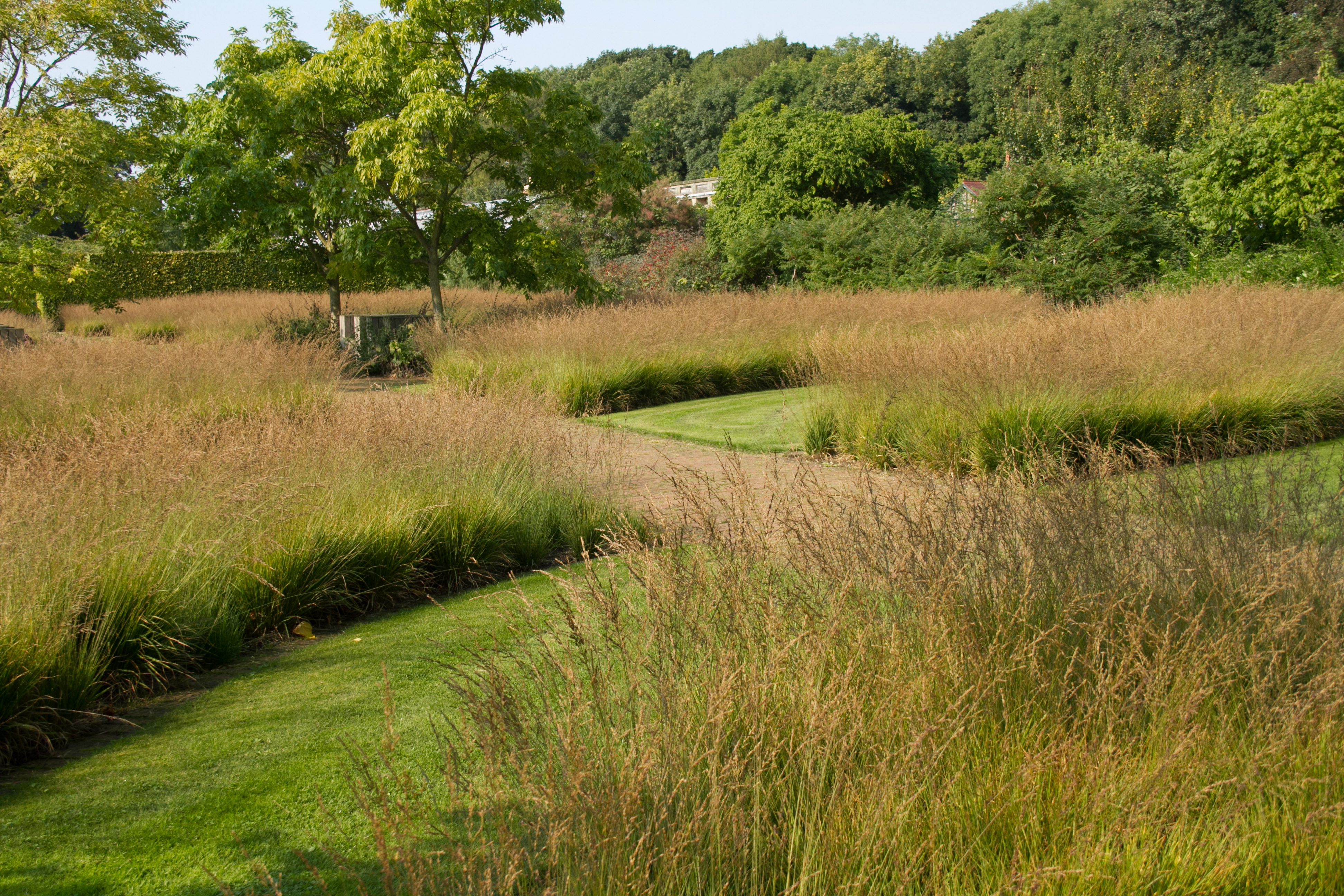
Nine distinct garden ‘rooms’ divide 4.5 acres enclosed within 18th century bricks walls at this Yorkshire garden.
Natural features in the landscape or elements deliberately placed can shape a garden journey. Water rills, hedges, walls and gates: all can dictate the way a visitor must go. Simple flower beds can do the same. In a private garden in New York state, a winding path edged by plants gently directs visitors towards an open area.
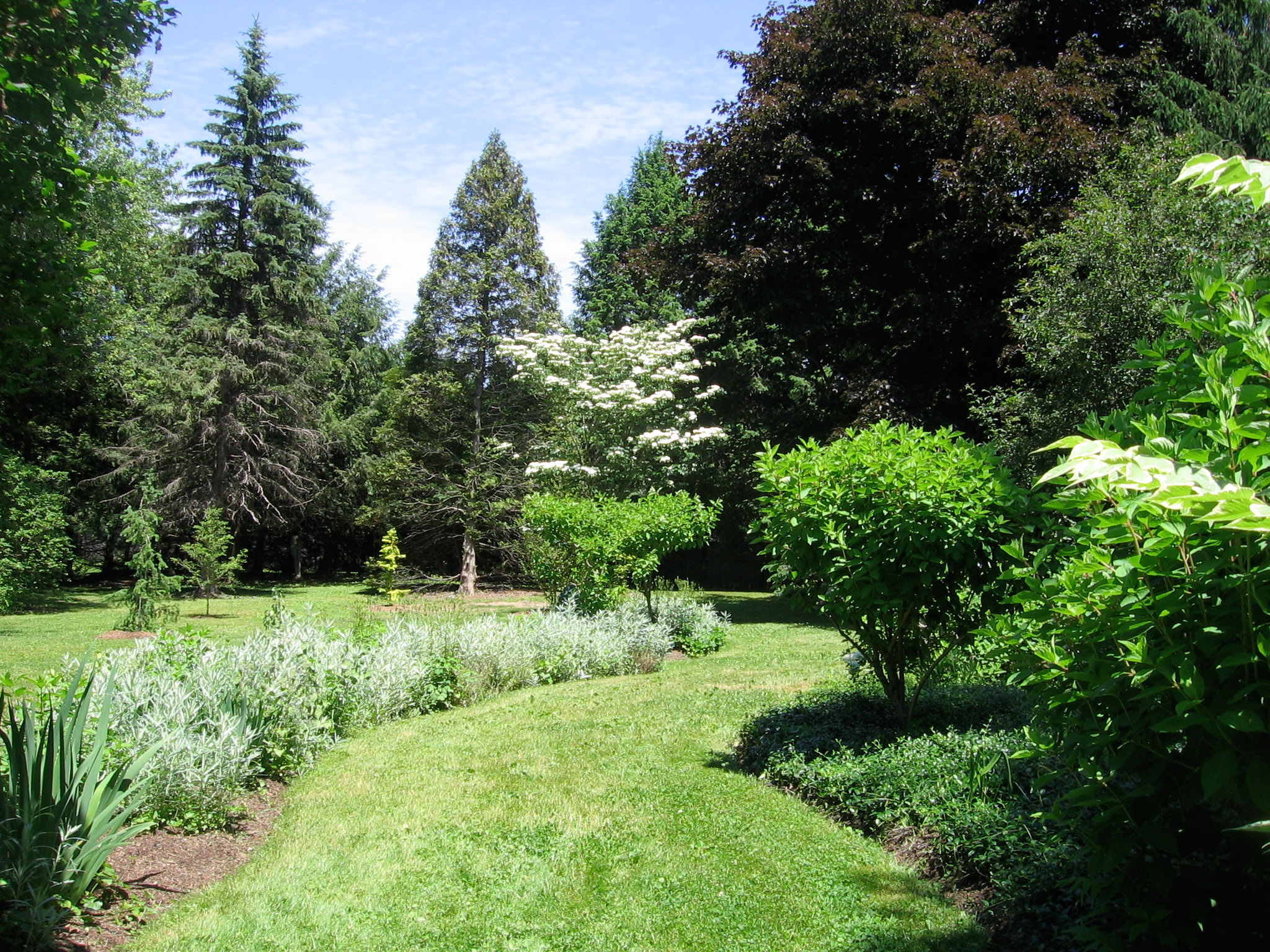
Mown grass makes a comfortable path through this garden.
People can move through the garden at Glen Villa in any number of ways. They can walk south towards the Lower Garden …

Magnolias are in full bloom now in the Lower Garden.
… or north, towards the Aqueduct.
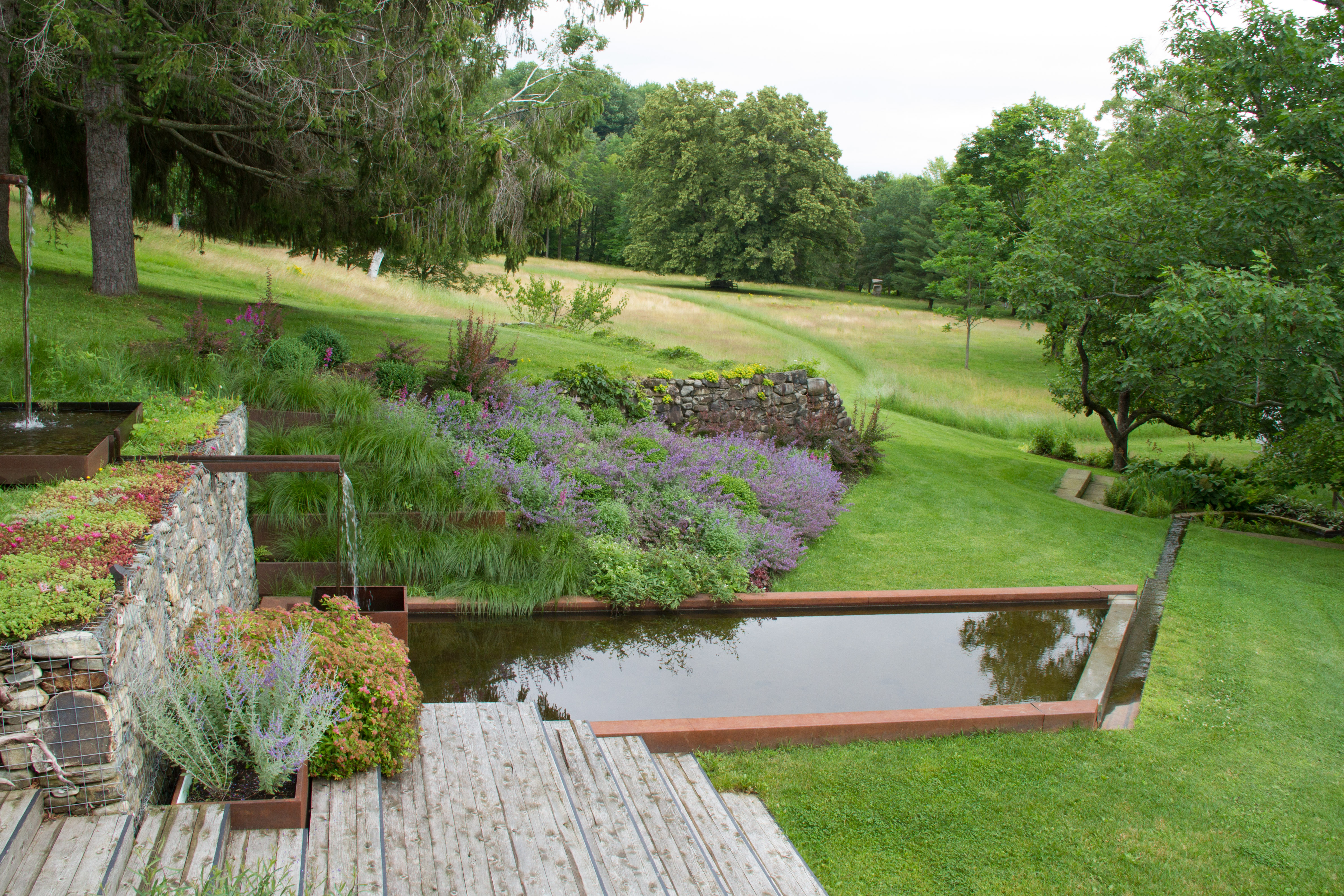
This photo is from last summer. Plants here now are barely above ground.
If they enter by the pond they see one view.
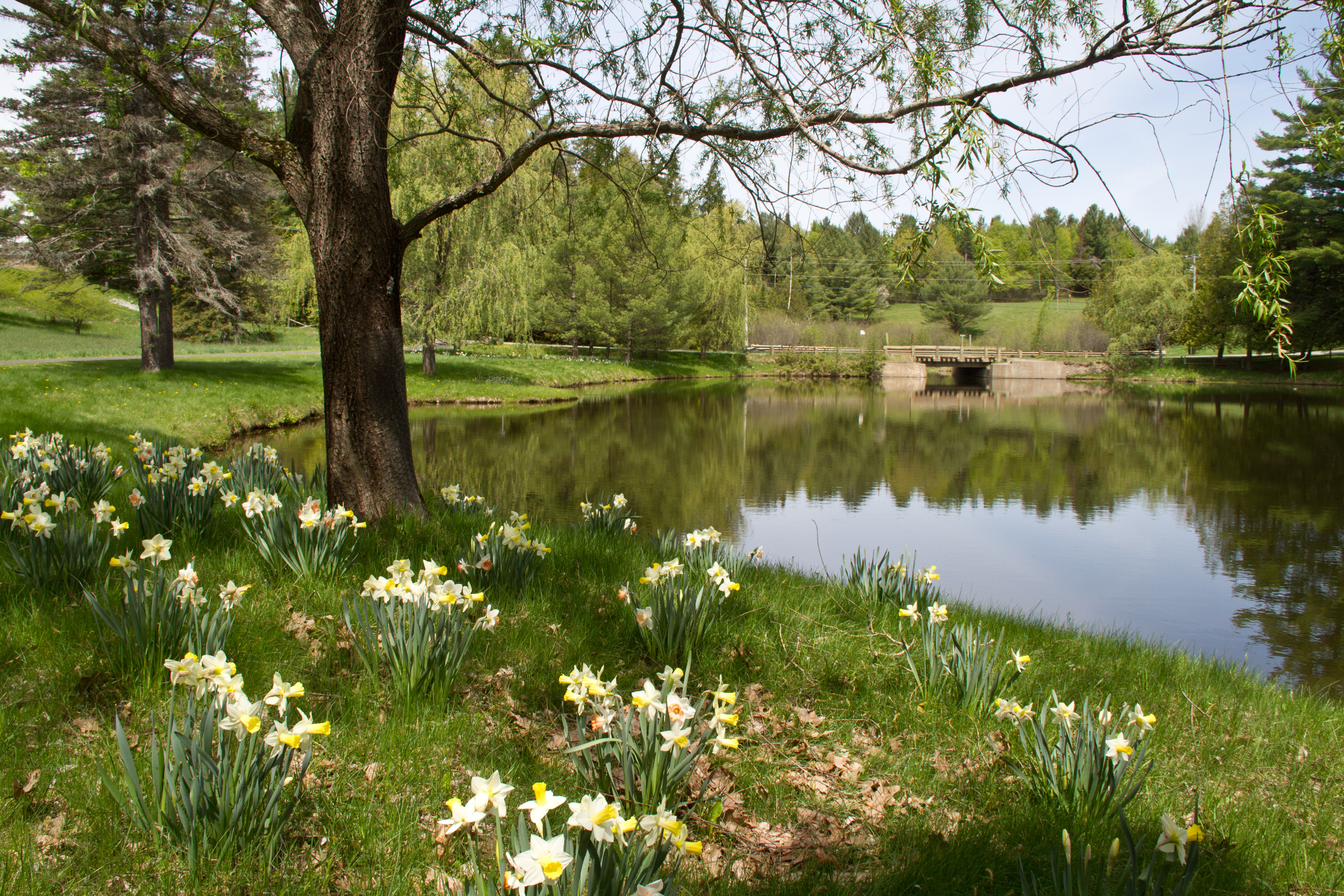
This pond exists because of a dam built about 150 years ago.
If they enter through the fields they see another.
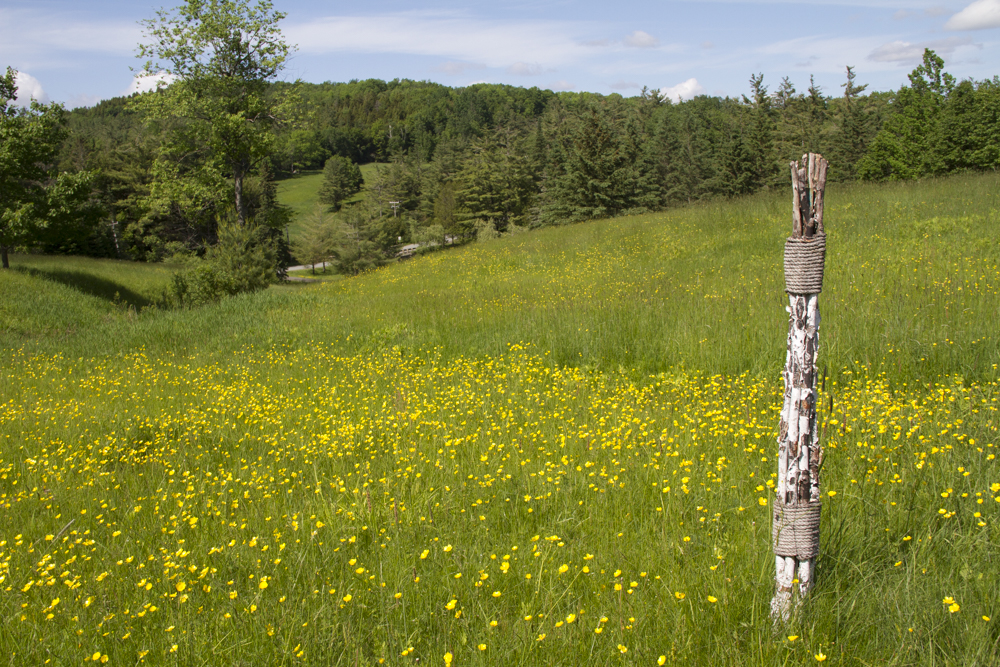
Buttercups cover the fields in June.
I like having a choice, in my own garden and in someone else’s. But having a choice can be confusing. I know my way around Glen Villa. I know I will see everything I want to see, with or without directions, or a map, or arrows pointing this way or that. But for others, a map or arrows may be essential.
What about you? Do you like to be directed around a garden or do you prefer to wander?






